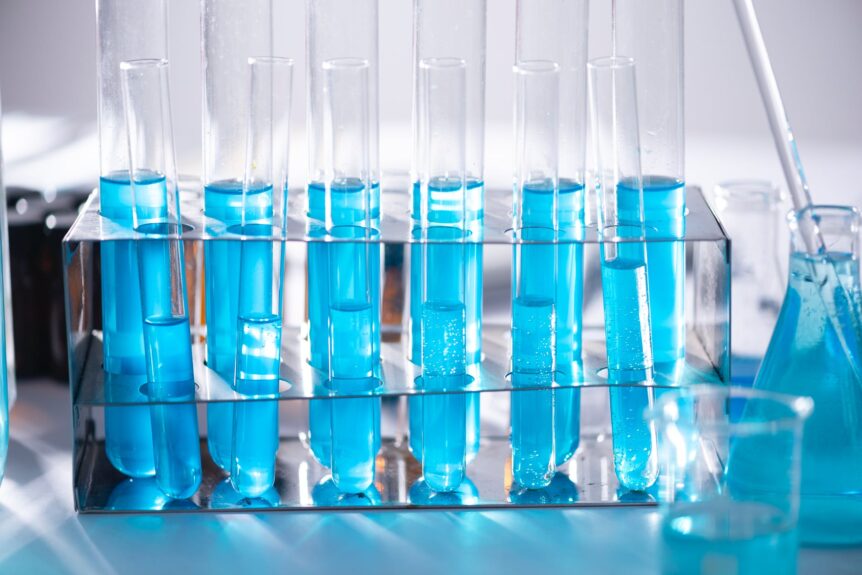Cell and Gene Therapy (CGT) is a major breakthrough in medical science. Since penicillin, the world’s first antibiotic, was discovered in 1928, there has been measured progress in the development of new medicines. With the innovation inherent in being able to modify cells to treat or cure diseases, one of the biggest challenges today for U.S. biopharma companies during these early years for CGT is finding robust, repeatable and scalable ways to manufacture these life-saving products and test to ensure they are safe and effective therapies. Setting up a European operation can help American biopharma companies speed up their reach as a next step in medical care and get these advanced treatments to a wide patient population.
Whether eliminating or preventing hereditary diseases like cystic fibrosis or curing possible killers like heart disease, AIDS and cancer, CGT will be at the forefront of future regenerative medicine and represents a massive worldwide market that is projected to reach over $66 billion by 2022. Therefore, U.S. biopharma companies are investigating every possible opportunity for growth and many are already looking overseas as a way to find trained employees, tap into established manufacturing facilities, leverage existing supply chains and streamline logistics.
With the tightest domestic labor market in half a century and rising costs in the United States, many major American biopharma companies such as Pfizer, Merck, Janssen, and others are glad they set up satellite operations years ago in Europe. It’s telling in today’s climate that a recent survey on the state of the worldwide CGT arena found that more European companies intended to move a CGT product into their pipeline than did firms in America.
American pharmaceutical companies are now looking to Europe to start manufacturing CGT drugs because they want to supply the 500 million people in Europe with these medicines and also because producing products in Europe has many advantages. Europe has a smaller physical size, increasing government research funding and improved IP protection. However, care should be taken in selecting the European location with the most to offer U.S. firms pursuing the CGT market. These are the key categories to consider:
Finding the Skills
The supply of skilled labor varies across the 28 European countries, so it is wise to establish where the most scientists, process engineers, validation engineers, quality control professionals, and laboratory technicians can be found. Also look for a country with a large, well-educated workforce that can supply professionals in supporting areas like sales, marketing, and finance. The easiest approach is to identify where other U.S. biopharma firms have located and leverage their homework. Plus, a larger contingent of existing employers will attract other skilled European workers and expand the labor supply.
Working with human cells mandates sterile, consistent processes so it’s imperative to find a potential CGT facility with access to personnel with a long track record in manufacturing biologics. After all, automated processes will be needed to lower the currently too-high price of such “personalized medicine.”
The necessary supply of skilled professionals will only grow, thus a far-sighted approach calls for examining what long-range training activities exist in countries under consideration. For example, the government-funded National Institute for Bioprocessing Research and Training (NIBRT) in Ireland trains more than 4,000 people annually to expand the supply of workers skilled in the manufacture of biologics. NIBRT recently announced an academic collaboration with Jefferson University in Philadelphia around training for single-use manufacturing.
Research Funding
Developing biologics and — most importantly — refining manufacturing processes to make them cost effective is a huge financial undertaking. For this reason, U.S. biopharma companies going overseas should start by examining the taxes in countries on their short list but there’s an even more important factor: How much government R&D funding is available?
Look for countries that offer research grants as well as those that directly fund promising areas of research. NIBRT works with local companies — including American firms — and academia to pursue key research that furthers bioprocessing production techniques. Meanwhile, Science Foundation Ireland supports biopharma research with a focus on understanding cancer, autoimmune disease, and neurological diseases.
U.S. biopharma firms looking to locate in Europe can also tap into the billions of euros in funding within the EU’s Horizon 2020, an innovation program that includes funds for developing new, safer and more effective medicines. After 2020, this program will transition to Horizon Europe, a similar R&D program that will dispense €100 billion.
Existing Infrastructure
The advantage of experience is critical in establishing an off-shore CGT operation, so looking at countries with an existing track record lowers risk. This is also helpful for important activities like planning, construction, permitting and other elements involved in setting up a biologics facility. Another advantage of not being a pioneer in a country with less familiarity with CGT is being able to tap into an ecosystem of suppliers and service companies, not to mention benefit from senior management experience.
Streamlined Logistics
Logistics are an essential aspect in CGT manufacturing, which calls for having a manufacturing facility with close access to clinics, partners, transportation and other elements. The smaller size of Ireland was a major attraction for giant Japanese firm Takeda Pharmaceuticals for making and distributing Alofisel, the first allogeneic stem cell product approved in Europe.
Takeda is establishing “centers of excellence” throughout the European and Canadian areas — the drug’s initial market — that are staffed with the trained medical personnel qualified to administer Alofisel.
Choosing Experienced Regulation
Any product like CGT that goes into the human body will be highly regulated, of course. U.S. companies setting up shop in Europe and distributing products to Europeans will be interfacing with the European Medicines Agency or EMA, the European equivalent of the FDA. However, each country’s internal agency will be involved as well, so it behooves U.S. firms to study the full regulatory landscape.
A new drug class such as CGT, as well as its manufacturing processes, will require approval. Again, it is wise to identify the regulatory body that has a track record working with pharmaceuticals and, ideally, biologics and if possible, identify a team with experience working on advanced therapeutic medicinal products.
Choosing a location where the regulator is already working with and auditing biopharma “clusters” will make a real difference. This hallmark of modern European business involves a specific city or place that brings together public and private operations focused on specific product areas and attracts the incubators, financers, manufacturers and other players needed for success.
Clusters
Among European countries that have active, successful medical-related clusters, Ireland ranks highly, hosting collaborative clusters in many cities across that nation involved in pharmaceuticals, biotechnology, medical devices, and diagnostics. When it comes to biopharma, the country hosts clusters in Cork, Sligo, Athlone, Waterford, and Dublin. In fact, as a small country, Ireland is really one major cluster for international biopharma manufacturing. Ireland is also home to 14 of the top 15 medical technologies companies — all with international manufacturing activities based on the island — with a number of major companies across the whole life sciences sector with multiple manufacturing sites.
Seeking locations that can benefit from biopharma clusters as well as having other desirable advantages such as a trained workforce, supportive regulator, research funding and established community of suppliers can make all the difference for U.S. firms wishing to exploit the enormous promise of the personalized CGT medicines they are developing.

Tommy Fanning is the Global Head of Biopharmaceuticals at the Investment Development Agency (IDA) Ireland, the government agency that promotes foreign investment in businesses within the country.
In June 2019, Tommy took part in a panel discussion at the American Biomanufacturing Summit 2019 to address challenges in meeting global capacity. He, along with five other industry leaders, discussed what companies are thinking about when building new capacities; how to best invest in capacity, contract manufacturers, emerging markets and technology; and what is needed to increase the agility of organizations in global markets.
To learn more, visit www.idaireland.com or the American Biomanufacturing Summit website.
